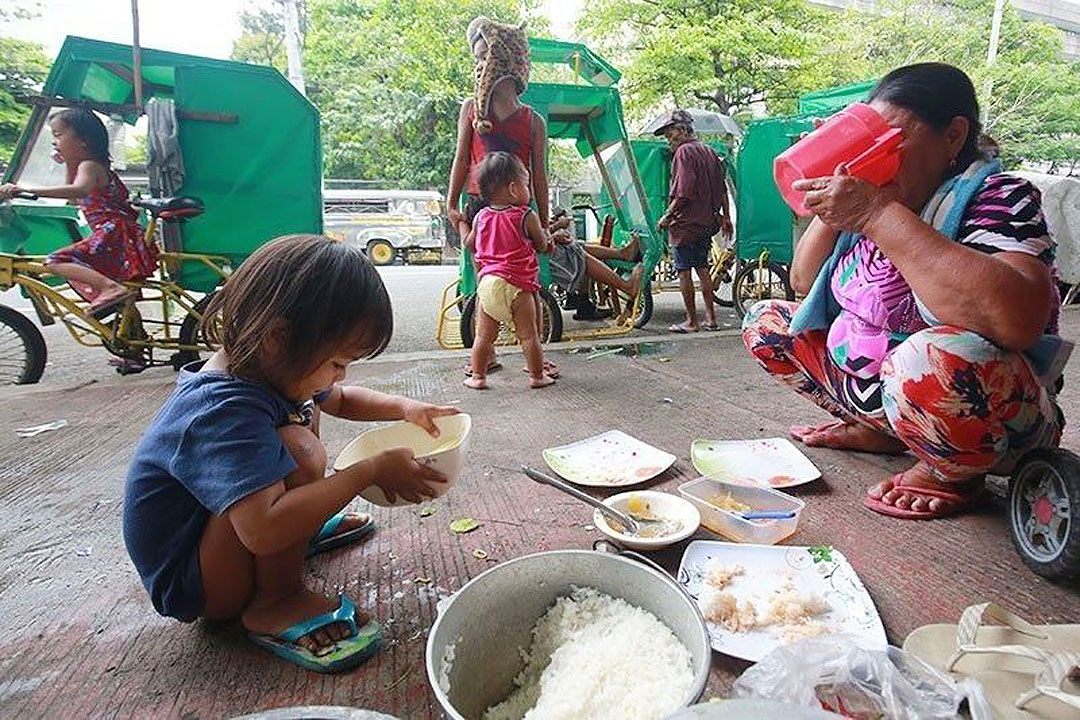5M Filipino kids lived in extreme poverty in 2022 — UN report

By Luisa Maria Jacinta C. Jocson, Reporter
A TOTAL of 12.4% of Filipino children have been living in extreme poverty in 2022, the latest policy research working paper released by the United Nations International Children’s Emergency Fund (UNICEF) and the World Bank showed.
The figure is equivalent to around 5.14 million children who live in extreme poverty in the Philippines. Extreme poverty is defined in this context as living on less than $2.15 (about P121) a day.
The report also showed 43% of Filipino children or around 17.8 million were living on less than $3.65 (P206) a day, which is the average poverty line for lower middle-income economies.
Meanwhile, 77.7% or over 32 million Filipino children were living on less than $6.85 (P387) or the poverty line for upper-middle income countries.
The report found that children remain disproportionately affected by extreme poverty, as 15.9% of children globally are living in extremely poor households, against 6.6% of adults.
“Children who are younger than 18 years comprise more than 50% of those living in extreme poverty, although their share of the population is 31%,” UNICEF and the World Bank said.
Globally, 333 million children were living in extreme poverty last year with 829 million of them living below $3.65 per day and 1.43 billion living below $6.85 per day.
Meanwhile, the report also showed that extreme child poverty rates declined to 15.9% from 20.7% between 2013 and 2022.
“While this lifted 49.2 million children out of extreme poverty, this was about 30 million less than what was projected in the absence of COVID-19-related disruptions,” the report said.
East Asia and the Pacific showed the “most significant decrease” in extreme poverty between 2013 and 2022.
“It is more critical than ever that all children have a clear pathway out of poverty — through equitable access to quality education, nutrition, health, and social protection, as well as safety and security,” World Bank Global Director for Poverty and Equity Luis Felipe Lopez-Calva said in a statement.
“The analysis shows that these policy portfolios need to consider both the common and distinct vulnerabilities and deprivations of children living in fragile and conflict prone settings, children in large households, younger children, children in rural settings, children in households where the head has no or little education — as these are more likely than other children to be living in extreme poor households,” according to the report.
FUNDS CUT FOR WOMEN, CHILDREN — LAWMAKER
In the Philippines, a lawmaker sounded the alarm on Wednesday over budget cuts on programs intended for children and women and criticized bigger allocations for agencies’ confidential and intelligence funds.
“We are dismayed by the prioritization of confidential funds, which have historically been prone to corruption, at the expense of crucial programs for women and children. This is a clear reflection of the government’s misplaced priorities,” Party-list Rep. Arlene D. Brosas said in a statement.
Under the P5.768-trillion proposed budget for next year, the government’s Family Planning and Reproductive Health program received zero funding.
The Council for the Welfare of Children suffered a 31.22% decrease to P94.09 million, the Juvenile Justice and Welfare Council’s budget is 45.03% lower to P117.88 million, while the National Authority for Child Care has a P298.49-million budget or a 31.23% decrease.
“These programs play a vital role in safeguarding the rights and well-being of women and children. Slashing their budgets jeopardizes their access to essential services and support systems amid the economic problems plaguing our country,” she said. — with Beatriz Marie D. Cruz



